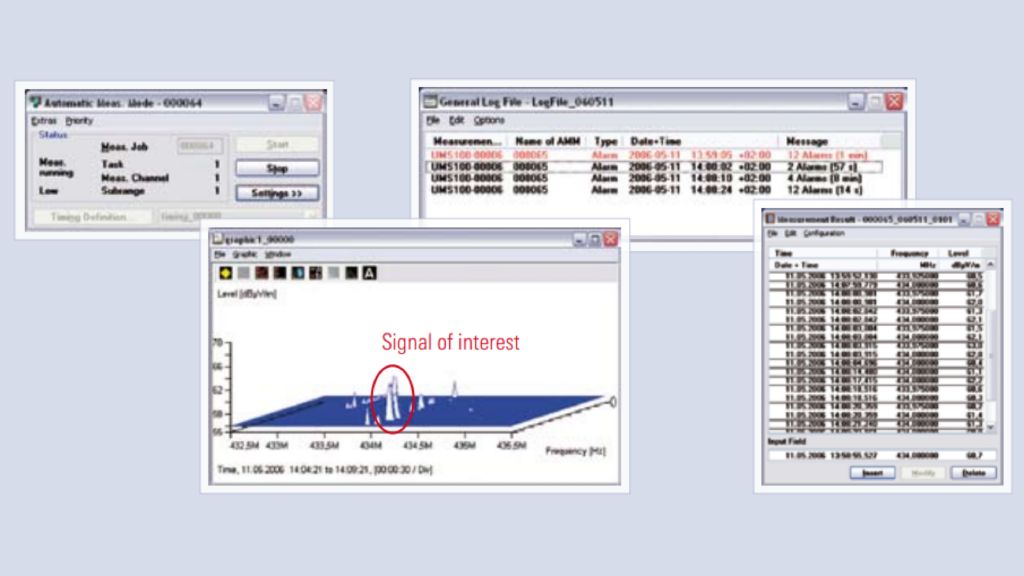Today, hospitals are using a growing number of highly sophisticated systems and devices for diagnostic and lifesaving purposes. The electronic controls and sensors of these systems may be subject to interference by radio units in the near vicinity or devices brought into the hospitals by visitors, possibly causing malfunctions that place patients at risk. The task is to automatically monitor the frequency spectrum in question – especially in hospital areas with sensitive systems – detect overshoots of defined thresholds and forward an alarm to the hospital’s monitoring control center (MCC), where operators can decide what further steps to take. To detect the RF radiation, the monitoring devices must be placed on or inside the buildings in question. The monitoring units used must meet several requirements:
- Wide frequency range
- Fast and simple installation
- Small outdoor units that do not require a special room
- Different types and ranges of power supply (AC/DC)
- Easy network integration (wireless, phone lines, etc)
- Automatic operation and alarm signaling
- Cost effective


The compact ¸UMS100 outdoor monitoring system is the optimal solution for automatically monitoring all frequency ranges and the RF radiation of interest if it is placed near or inside the buildings or rooms in question. All ¸UMS100 systems are remote-controlled and administered from an MCC. The ¸UMS100 can be linked to the MCC via a LAN/WAN or via a wireless connection using mobile phone data services based on standards such as GSM or CDMA.
In the automatic mode, the ¸UMS100 immediately compares the live measurements with user-defined reference spectra. If one of the alarm criteria is met, an alarm message is automatically generated and forwarded to the MCC. Furthermore, audio recording can be initiated.
The MCC runs the powerful ¸ARGUS platform to provide easy access to all ¸UMS100 systems. Besides direct interactive access, the preferred mode of operation is automatic measurements. Once a measurement is defined, it will run automatically on the internal processor of the ¸UMS100, either continuously or within selected timeslots, without requiringany further action on the part of the operator or a network connection. Thus, operating costs will be clearly reduced. Measurement results can be saved and displayed as tables and graphics. All alarm messages created by the ¸UMS100 are listed in the general log file in the MCC, as shown below (unprocessed entries marked in red).
Depending on operational preferences, the MCC can either routinely poll the ¸UMS100 to request measurement results or wait for alarm messages automatically generated and forwarded by the ¸UMS100 after a suspicious signal has been detected.
Upon receiving an alarm, the operator in the MCC must decide what further steps need to be taken:
- Use the ¸UMS100 to listen to the demodulated audio frequency
- Perform dedicated measurements on the signal that triggered the alarm
- Send personnel with special monitoring instruments to the area of interest
The ¸UMS100 has been designed as a very cost-efficient, compact, robust, standalone monitoring system. It reliably detects signals with a minimum duration of typically one to two seconds. Plus, it shows the presence of transmitting GSM mobile devices.


Automatic monitoring of radio signals interfering with sensitive devices in hospitals


